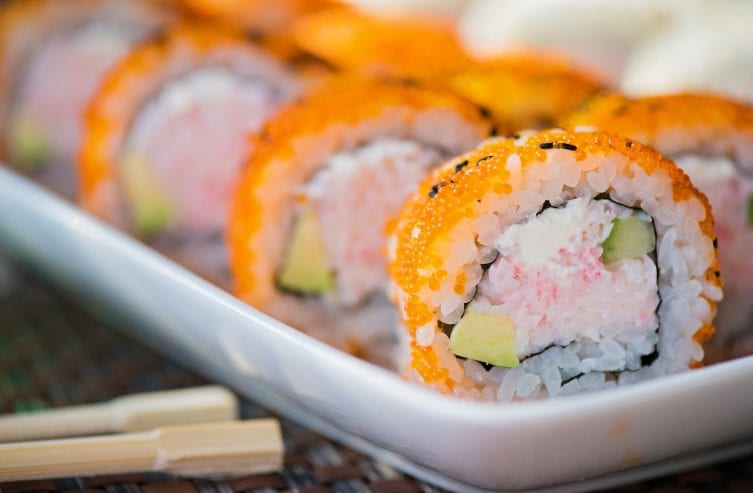Sushi is one of the oldest and most traditional Asian dishes. It has already been mentioned in official Japanese government documents in 718. Originally serving as a method of fish conservation, sushi developed over the centuries. When sushi became fashionable outside Japan in the second half of the 20th century, people in North America initially didn’t enjoy the mixture of rice, fish and vegetables. Enter the California Roll.
General

From Tokyo to California
In 1966, the first Japanese restaurant was opened in Little Tokyo, Los Angeles. Noritoshi Kanai, an export manager for Japan and the US, engaged a traditional sushi chef to lead the restaurant. However, the purchase of suitable fish in California was problematic in those days. Fish was imported directly from Tokyo via plane which was quite extraordinary back then. The intention was to target Japanese customers living abroad. In order to satisfy American customers as well, sushi chefs had to find new ways of creating the Japanese specialty.
The origin story of the California Roll is controversial. The most widely spread story is that Ichiro Mashita invented the roll when he realized that the oily texture of avocado is a perfect substitute for toro, a fatty tuna. Since Americans did not like seeing and chewing the nori on the outside, he created the roll “inside-out”.
Others say that Hidekazu Tojo, owner of Tojo’s in Vancouver, is the inventor of the California Roll. According to his story, he tried to hide the seaweed because the Western population was not used to eating it. Since many customers from Los Angeles loved the roll made inside-out, it received the name California Roll. In 2016, the Government of Japan honored Hidekazu Tojo for promoting the Japanese cuisine.
Regardless of which story is true, the newly created sushi spread from California throughout the US in the 1980s. The California Roll highly contributed to sushi’s growing popularity in the United States. Diners soon started exploring more exotic sushi options, but the California Roll remains popular all over the world – including Japan.
With the help of Japanese tourists, the world’s longest California Roll has been made by a Japanese entertainer and tourism ambassador of California in Hollywood in 2005.
What’s inside the inside-out roll?
Compared to other sushi, the California roll is not wrapped with seaweed. Rice sprinkled with toasted sesame or tobiko forms the outer layer of the roll. It is typically filled with cucumber, crab stick/salad and avocado.
Food Facts
Eating Raw Fish
With the rising interest in sushi products, people began to doubt the healthiness of eating raw fish. Insights into sensory, micro-biological, chemical-physical and parasitological investigations showed that 70 % of the inspected sushi products are in a good condition. Moreover, 83 % of sushi show low bacterial counts. As a result, eating fresh or frozen fish is not problematic as long as ideal hygienic conditions are maintained.